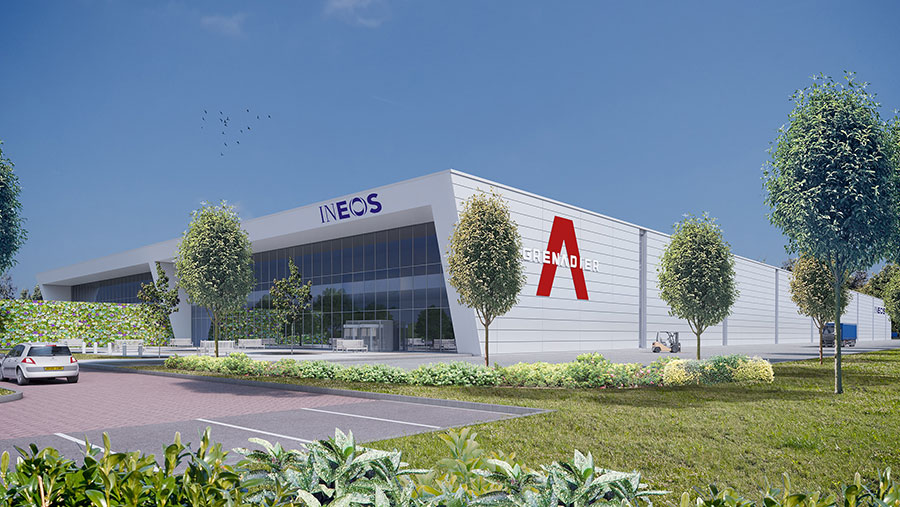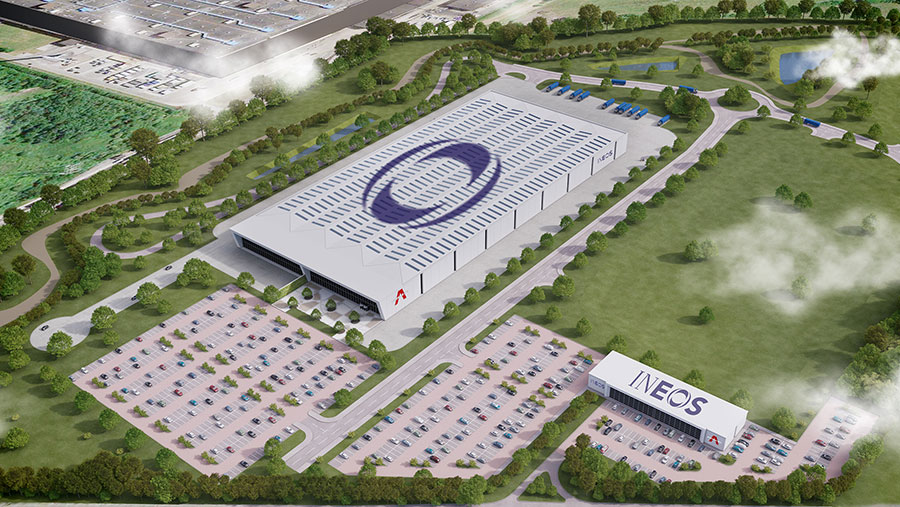Ineos unveils plans for British-built Grenadier 4×4

Ineos Automotive has revealed details of its much-anticipated farm-friendly 4×4 that will fill the gap vacated by the now up-market Land Rover Defender.
The Grenadier station wagon is set to go on sale in 2021, having been backed by a £600m investment from billionaire businessman Sir Jim Ratcliffe, Defender enthusiast and owner of chemical firm Ineos.
Construction has started on a brand-new manufacturing facility neighbouring Ford’s engine plant in Bridgend, south Wales, which is scheduled to close next year, costing 1,700 jobs. Ineos says the redundant workforce will help fill 200 vacancies when it starts production in two years’ time, and up to 500 when it’s at full capacity.
The promise of job creation has garnered planning, development and financial support from the Welsh government.
Undoubtedly, the decision to take the British-built route is a bold one, particularly given the influence Brexit has had on sending other automotive businesses scarpering for less-volatile, tariff-free ground.
However, the risk of added export costs is little concern to the Ineos moneymen, particularly given the project was launched in the deep fog of Brexit in January 2017 and little has changed since then.
Building work is expected to be completed by September next year – pre-production models are due soon after – and the site will have the capacity to meet Ineos’ four-year target of 25,000 units/year.
Frames and body components will be assembled at a second new factory in Portugal, which Ineos says will give it a much firmer grip on the supply chain.
See also: Land Rover Defender gets £80,000 Twisted treatment
What will it look like?
The designs have apparently been finished but, sadly, Ineos is keeping them well hidden. Expect utilitarian and boxy to the point of being crude – somewhere between the old Land Rover Defender and any Jeep Wrangler from the past few decades.
Technical details about the Grenadier’s components remain sketchy at present, but the company says it is knee-deep in negotiations with several key suppliers, including those of the automatic transmission.
There won’t be a manual option, but the company has promised a ladder chassis, beam axles and locking diffs.
BMW will supply straight-six diesel and petrol engines, tuned to reduce outright horsepower and provide better torque delivery for heavy towing.
Hydrogen fuel cell technology may come into play in the future, particularly as Ineos is Europe’s largest provider of hydrogen.

Aerial view of proposed Ineos Bridgend factory
What about practicality?
It should tick all the farming boxes – it will have a manually engaged, low-range box, a maximum payload of about 1t and a braked towing capacity of 3.5t.
As for spec, analogue dials with chunky switchgear will be the focus, though a touchscreen will also be included to satisfy US market regulations.
The company says there will be the chance to tart it up from the standard no-frills, steel-wheeled workhorse to something a bit more hipster, but insists that its credibility lies in proving it can do a job of work.
With production so far off, pricing is inevitably vague. We’re told it will be within 10-15% of a Ford Ranger Wildtrak pickup (£32,006), as the bulk of European demand is heavily weighted toward high-spec double-cabs. That puts it at £25,000-£30,000.
Will there be a pickup?
Initial production will focus on the station wagon and the first prototypes will be unveiled in October next year, but other variants are likely to be added in the future.
Most interestingly, it will include a double-cab pickup – something Ineos believes is crucial to the range.
And the company says it intends to sell as directly to farmers as possible, which might mean picking one up at your local machinery dealership.

